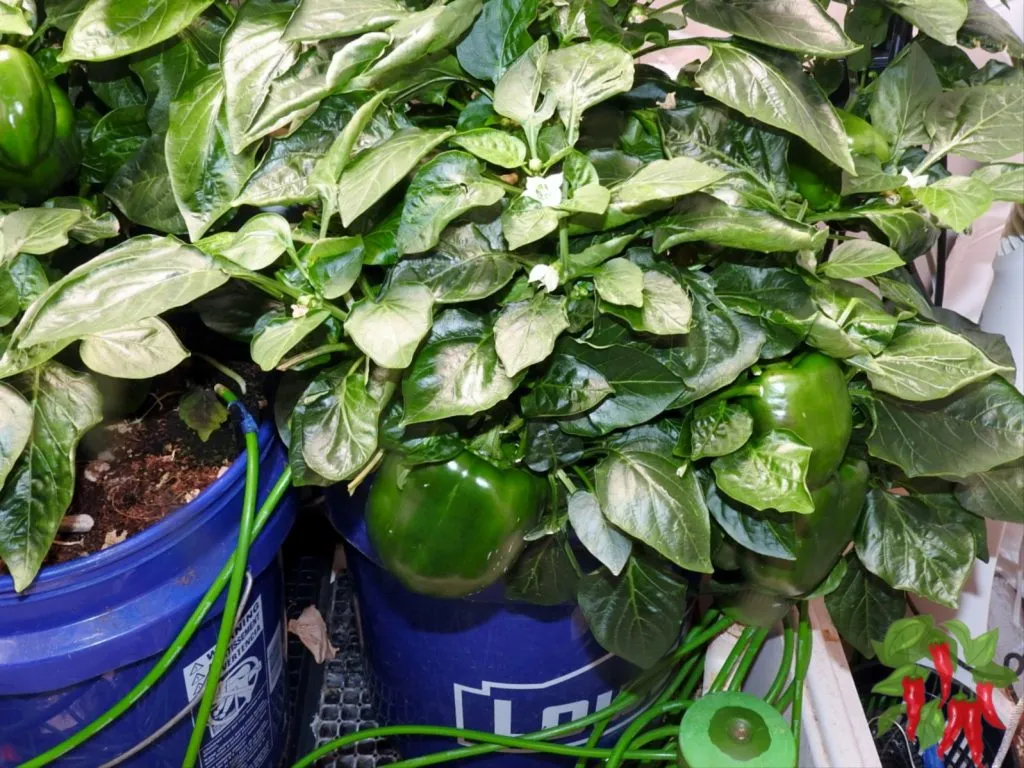
What is hydroponic gardening for beginners?
Hydroponic gardening lets you grow plants without soil using water, nutrients, and light.
It’s a clean, space-saving way to garden indoors or outdoors. Beginners can start with a simple setup using containers, coco coir, and LED lights to grow fresh herbs, greens, or even strawberries.
💡 What Is Hydroponic Gardening for Beginners?
Hydroponic gardening lets you grow plants without soil using water, nutrients, and light. It’s a clean, space-saving way to garden indoors or outdoors. Beginners can start with a simple setup using containers, coco coir, and LED lights to grow fresh herbs, greens, or even strawberries.
🪴 Introduction: What Makes Hydroponics So Beginner-Friendly?
🌿 What Is Hydroponic Gardening?
Hydroponic gardening is a method of growing plants without soil. Instead, plants grow in water enriched with nutrients and supported by a lightweight growing medium like coco coir or clay pellets. It’s ideal for indoor spaces and gives you more control over growth conditions.
- 💧 Grows plants without soil using water, nutrients, and a growing medium
- 💡 Often set up indoors with LED lights and water circulation
- 📦 Cleaner, faster, and more space-efficient than traditional gardening
🧰 What You Need to Start a Simple Hydroponic Garden
You don’t need a fancy setup to start growing hydroponically. A few basic supplies will get you going, and most of them are affordable and easy to find. Here’s what every beginner hydroponic garden needs:
- 🪣 Container or reservoir – holds the nutrient solution
- 🪴 Net pots or baskets – support your plants in the grow medium
- 💨 Air pump and air stone – oxygenate the water to prevent root rot
- 💧 Water and nutrients – the lifeblood of your hydro setup
- 💡 LED grow light – essential for indoor systems with no natural light
For more on setups that fit in apartments or closets, check out our guide on how to set up a grow tent or explore hydroponic gardening for small spaces.
🌱 Best Grow Media for Hydroponics (And Why They Matter)
Your grow medium replaces soil in a hydroponic system. It gives roots something to anchor into while water delivers the nutrients.
One of the easiest options? Using coco coir in regular pots with drip irrigation. It blends the feel of traditional container gardening with hydroponic efficiency.
- 🥥 Coco coir: Renewable, lightweight, and holds moisture well
- 🪨 LECA (clay pellets): Reusable, good airflow, great for net pots
- 🌫️ Perlite or vermiculite: Boosts drainage and aeration in blends
- 🧱 Rockwool: Common in starter cubes, but less eco-friendly
You can mix media or use them on their own, depending on your system. For beginners, coco coir is a top pick, especially when paired with a low-maintenance drip system or passive watering setup.
💡 Choosing the Right Light for Your Hydroponic Garden
When growing indoors, your plants depend entirely on artificial light. Choosing the right type can make the difference between leggy stems and lush, healthy growth.
Full-spectrum LEDs are the top choice for beginners who want consistent results without high energy bills.
- 🔆 Full-spectrum LEDs: Best for all growth stages from seed to harvest
- 📈 High PAR output: Helps maximize photosynthesis and plant health
- 🔧 Adjustable brightness: Useful for small spaces or young seedlings
Leafy greens, herbs, and microgreens thrive under strong light. For a deeper look at lighting options, see our guide on LED hydroponic lighting for beginners.
🧪 Do You Really Need Nutrients for Hydroponics?
Yes, nutrients are essential in hydroponics because there’s no soil to feed your plants. Everything they need must be added to the water.
Getting this balance right is one of the most important parts of a successful system.
- 💧 Essential nutrients: No soil means nothing unless you add it
- 🌿 Balanced formulas (N-P-K): Look for hydro mixes designed for leafy crops or fruiting plants
- 🧴 Liquid or powder: Options like Jack’s 3-2-1 or TPS One are easy to mix and monitor
Want more help picking the right formula? Check out our full guide: Are Hydroponic Nutrients Required?
🌿 What Are the Easiest Plants to Grow in Hydroponics? (Beginner Wins)
One of the best things about hydroponics is how quickly some crops grow. If you’re new to it, start with plants that don’t need pollination or complex support systems. These picks are fast, forgiving, and rewarding.
- 🥬 Lettuce, basil, spinach: Fast-growing, no-fuss leafy greens
- 🍓 Swiss chard, microgreens, strawberries: Tasty and productive in small systems
- 🌶️ Peppers and tomatoes: More advanced, but great once you’re comfortable
🛠️ What Are Common Hydroponic Mistakes to Avoid?
Every new grower runs into a few bumps, but most hydroponic mistakes are easy to prevent once you know what to watch for. These are the most common slip-ups that can lead to stunted plants or system issues.
- 🥴 Overfeeding or underfeeding: Stick to proper nutrient dosages and monitor your EC
- 💡 Poor lighting: Too weak or too far from plants slows growth
- 🌊 Neglecting water pH: Aim for 5.5–6.5 for most crops
- 🦠 Ignoring root health: Watch for root rot, algae buildup, or clogged air stones
🧠 How Do You Maintain a Healthy Hydroponic Garden?
Once your system is up and running, keeping it healthy comes down to a few simple habits. Regular checks and small adjustments go a long way toward steady growth and happy plants.
- 📅 Check water pH and temperature weekly: Stay in the ideal range for plant health
- 🧼 Flush and clean your system: Do this every few weeks to avoid buildup and algae
- 💧 Top off nutrient solution: Replace lost water and keep nutrient levels consistent
- 🔄 Adjust lighting cycles: Match the stage of growth (seedling, veg, flowering)
✅ Final Thoughts: Hydroponic Gardening for Beginners
Why Hydroponics Is Worth Starting Today
Hydroponic gardening isn’t just for pros or science labs. It’s one of the easiest ways to grow fresh, healthy food in small spaces—right from your kitchen, balcony, or spare room. Start simple, stay consistent, and you’ll be surprised by how quickly you see results.
- 🚿 No soil needed, just water and nutrients
- 🪴 Grows indoors year-round in any climate
- 🥬 Lettuce, herbs, and greens thrive in small setups
- 🔌 Full control over light, water, and nutrition
- 🌱 A perfect way to grow more with less space
Want to explore more systems or get help troubleshooting? Check out our full Hydroponic Gardening category for step-by-step guides and product reviews.
📘 Related Hydroponic Gardening Articles
Want to dive deeper? These helpful posts cover hydro systems, grow lights, nutrient tips, and beginner setups that fit any space:
- 🌿 Hydroponic Gardening At Home: Easy Gardens Without Soil
- 🥥 Hydroponic Grow Medium: 5 Easy Tips For Beginners
- 💡 LED Hydroponic Lighting: Easily Grow Plants with LED Lights
- 🧪 Are Hydroponic Nutrients Required? 7 Easy Tips For Beginners
- 🧰 Hydroponic Farming Kit: What’s Inside and How It Works
- 🔁 Hydroponic Growing Systems: Which One Is Right for You?
- 🪴 How to Set Up a Hydroponic System for Vegetables
- 🌱 Good Plants for Hydroponics Beginners
- 🏢 Small Space Apartment Hydroponics DIY: Easy Tips and Tricks
- 🥕 How to Grow Hydroponics on Your Balcony
❓ Hydroponic Gardening for Beginners FAQs
Can you grow hydroponic plants without nutrients?
No. Without soil, your plants won’t get the nutrients they need unless you add them to the water.
How often should I change the water in my hydroponic system?
Flush and refill every two to three weeks. Top off with fresh water in between.
Do hydroponic systems need direct sunlight?
Not if you’re using grow lights. Most indoor hydro setups run entirely on LED lighting.
What is the ideal pH for hydroponic plants?
Most crops do best with a pH between 5.5 and 6.5.
What’s the best hydroponic system for beginners?
A simple deep water culture (DWC) or coco coir with drip irrigation is easy and affordable.
🔗 Trusted Resources on Hydroponics
Looking for science-backed tips and expert advice? This university extension guide is a great starting point for home hydroponic growers:
